The chair covers a wide range of methods, domains, and data formats. It has extensive expertise in developing innovative machine learning approaches, particularly modern deep learning architectures, and their application in business, public administration, and defense:
Autonomous Robots/Drones:
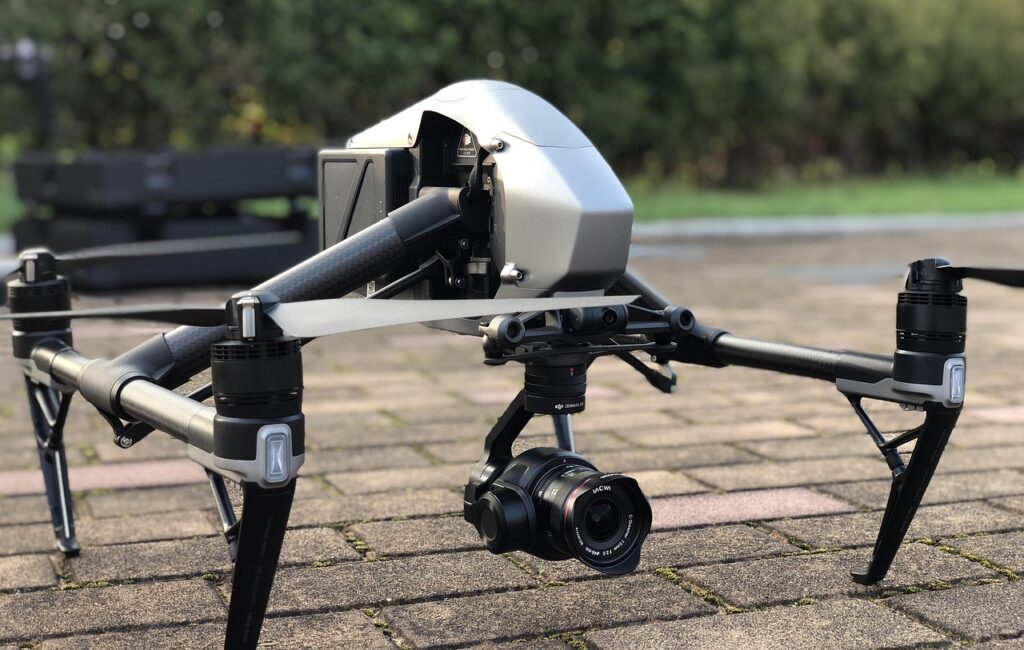
In the field of autonomous robots/drones the chair has expertise in the coordination of autonomous robot swarms (Büttner 2010), localization and position recognition (Baumgartl & Büttner 2020), as well as in attack scenarios (Bertram/Eisentraut/Büttner 2025), and the detection of forensically relevant signals (Gohe et al. 2024) and important markers in rescue scenarios (Büttner & Baumgartl 2019), also in optimizing the energy efficiency of drones (Gatscher/Breitenbach/Büttner 2023) and drone-based object detection, for example of landmines (Heuschmid et al. 2025). We design and improve systems for all kinds of object detection for military as well as civil applications, such as care environments (Auweiler et al. 2025).
Heuschmid/Wacker/Zimmermann/Penava/Buettner (2025): Advancements in Landmine Detection: Deep Learning-Based Analysis with Thermal Drones. IEEE Access 13:91777-91794. doi:10.1109/ACCESS.2025.3572196.
Bertram/Eisentraut/Buettner (2025): A Systematic Literature Review of Current Machine Learning Approaches for Detecting GNSS Spoofing Attacks. IEEE Access 13:108898-108917. doi:10.1109/ACCESS.2025.3582435.
Auweiler/Mueller/Puhla/Penava/Buettner (2025): A Novel High Performance Object Identification Approach in Care Homes Using Gaussian Preprocessing. IEEE Access 13:79705-79717. doi:10.1109/ACCESS.2025.3566223.
More publications related to Autonomous Robots/Drones
Gohe/Kottek/Buettner/Penava (2024): Classifying forensically important flies using deep learning to support pathologists and rescue teams during forensic investigations. PLOS ONE 19(12):e0314533. doi:10.1371/journal.pone.0314533.
Gatscher/Breitenbach/Buettner (2023): Machine Learning-Based Power Consumption Prediction for Unmanned Aerial Vehicles in Dynamic Environments. HICSS-56 Proceedings, pp. 6924-6933. doi:10.24251/HICSS.2023.839.
Baumgartl/Buettner (2020): Development of a highly precise place recognition module for effective human-robot interactions in changing lighting and viewpoint conditions. HICSS-53 Proceedings, pp. 563-572. doi:10.24251/HICSS.2020.069.
Buettner/Baumgartl (2019): A highly effective deep learning based escape route recognition module for autonomous robots in crisis and emergency situations. HICSS-52 Proceedings, pp. 659-666. doi:10.24251/HICSS.2019.081.
Büttner (2010): Automatisierte Verhandlungen in Multi-Agenten-Systemen: Entwurf eines argumentationsbasierten Mechanismus für nur imperfekt beschreibbare Verhandlungsgegenstände, Zugl.: Diss. Univ. Hohenheim 2009, Gabler-Verlag, 2010, 287 Seiten,
ISBN 978-3-8349-2131-4. doi:10.1007/978-3-8349-6500-4.
Behavioral analytics for accurate situational awareness:

In the field of behavioral analytics, we are specialized in social media data (Büttner 2014, 2017d), digital footprints (Büttner 2019), speech signals (Büttner et al. 2022), eye tracking and video data forpredicting user performance (Büttner et al. 2018), workload (Büttner 2017c), attention (Sauer/Büttner et al. 2018), career opportunities (Büttner 2017b), purchase intentions (Büttner 2017a), trends (Contala et al. 2024), and sentiments (Braig et al. 2023), as well as gesture recognition (Hax et al. 2024) and data protection compliant face recognition (Büttner 2018).
Hax/Penava/Krodel/Razova/Buettner (2024): A Novel Hybrid Deep Learning Architecture for Dynamic Hand Gesture Recognition. IEEE Access 12:28761-28774. doi:10.1109/ACCESS.2024.3365274.
Contala/Gerk/Hoettler/Buettner (2024): Topic trends in sustainability disclosure of German DAX 40 companies – A text mining-based analysis. IEEE Access 12:77300-77335. doi:10.1109/ACCESS.2024.3404368.
Braig/Benz/Voth/Breitenbach/Buettner (2023): Machine Learning Techniques for Sentiment Analysis of COVID-19-Related Twitter Data. IEEE Access 11:14778-14803. doi:10.1109/ACCESS.2023.3242234.
More publications related to Behavioral Analytics
Buettner/Gross/Roessler/Winter/Sauter/Baumgartl/Ulrich (2022): High-Performance Fake Voice Detection on Automatic Speaker Verification Systems for the Prevention of Cyber Fraud with Convolutional Neural Networks. HICSS-55 Proceedings, pp. 6302-6311. doi:10.24251/HICSS.2022.764. Best Paper Award
Büttner (2019): Online user behavior and digital footprints. Zugl.: Kumulative Habil.-schrift. Univ. Trier 2019. Link.
Buettner (2018): Robust user identification based on facial action units unaffected by users’ emotions. HICSS-51 Proceedings, pp. 265-273. doi:10.24251/HICSS.2018.036.
Sauer/Buettner/Heidenreich/Lemke/Berg/Kurz (2018): Mindful Machine Learning: Using Machine Learning Algorithms to Predict the Practice of Mindfulness. European Journal of Psychological Assessment 34(1):6-13. doi:10.1027/1015-5759/a000312.
Buettner/Sauer/Maier/Eckhardt (2018): Real-time Prediction of User Performance based on Pupillary Assessment via Eye-Tracking. AIS Transactions on Human-Computer Interaction 10(1):26-56. doi:10.17705/1thci.00103. Best Paper Award
Buettner (2017a): Predicting user behavior in electronic markets based on personality-mining in large online social networks: A personality-based product recommender framework. Electronic Markets: The International Journal on Networked Business 27(3):247-265. doi:10.1007/s12525-016-0228-z. Paper of the Year Award
Buettner (2017b): Getting a job via career-oriented social networking markets: The weakness of too many ties. Electronic Markets: The International Journal on Networked Business 27(4):371-385. doi:10.1007/s12525-017-0248-3.
Buettner (2017c): Asking both the User’s Brain and its Owner using Subjective and Objective Psychophysiological NeuroIS Instruments. ICIS 2017 Proceedings: 38th International Conference on Information Systems (ICIS), December 10-13, 2017, Seoul, South Korea. Link.
Büttner (2017d): Prädiktive Algorithmen zur Persönlichkeitsprognose auf Basis von Social-Media-Daten. PERSONALquarterly 3:22-27, 2017. Link.
Buettner (2014): A Framework for Recommender Systems in Online Social Network Recruiting: An Interdisciplinary Call to Arms. HICSS-47 Proceedings, pp. 1415-1424. doi:10.1109/HICSS.2014.184.
Infrastructure Security:
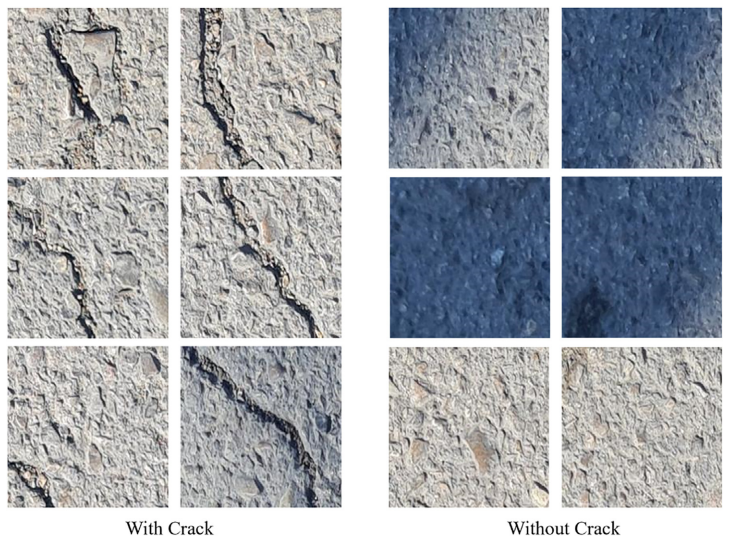
To safeguard infrastructure under high-load scenarios, we are developing robust AI architectures for infrastructure monitoring. For instance, reinforced concrete bridges can be monitored in real-time using ultrasonic sensors and video/image data (Büttner/Bertram/Fischer-Brandies, 2025). This enables the early detection of fine cracks, spalling, and emerging cavities. These AI architectures are designed to function robustly under varying lighting conditions, contamination, and material properties.
Further information on protection of critical infrastructure (KRITIS) can be found on the information pages of the Federal Office of Civil Protection and Disaster Assistance and the Federal Office for Information Security.
Buettner/Bertram/Fischer-Brandies (2025): The Impact of Combining Datasets on the Robustness of Deep Learning Architectures: A Cross-Dataset Analysis. IEEE Access 13:151993-152009, 2025. doi:10.1109/ACCESS.2025.3604689.
Fischer-Brandies/Bertram/Mai/Buettner (2025): AsphaltCrackNet: A Novel Architecture for Classifying Cracks in Asphalt Pavement. IEEE Access, 13:177160-177174, 2025. doi:10.1109/ACCESS.2025.3620212.
Pagers/Penava/Buettner (2025): A High-Performance Deep-Learning-based Ground Penetrating Radar Classification Approach with Special Focus on Multi-Class Robustness. IEEE Access, 13:175847-175857, 2025. doi:10.1109/ACCESS.2025.3619159.
Cyber Security:
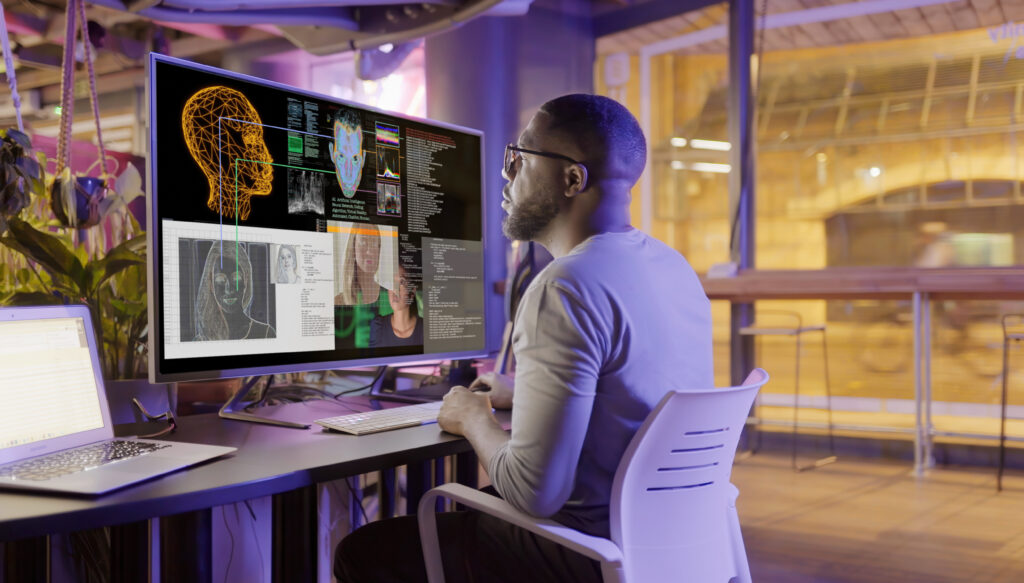
Countering hybrid attacks requires organizational and technological protective measures. We analyze corporate threats (Ulrich/Frank/Büttner 2021) and develop AI-based defense technologies (Büttner et al. 2021, 2022), e.g. for detecting fake voices (Büttner et al. 2022) or GNSS spoofing attacks (Bertram/Eisentraut/Büttner 2025).
Further information on hybrid threats is available from the Federal Ministry of Defense and the Federal Intelligence Service (BND).
Bertram/Eisentraut/Buettner (2025): A Systematic Literature Review of Current Machine Learning Approaches for Detecting GNSS Spoofing Attacks. IEEE Access 13:108898-108917. doi:10.1109/ACCESS.2025.3582435.
Buettner/Gross/Roessler/Winter/Sauter/Baumgartl/Ulrich (2022): High-Performance Fake Voice Detection on Automatic Speaker Verification Systems for the Prevention of Cyber Fraud with Convolutional Neural Networks. HICSS-55 Proceedings, pp. 6302-6311. doi:10.24251/HICSS.2022.764. Best Paper Award
Buettner/Sauter/Klopfer/Breitenbach/Baumgartl (2021): A review of recent advances in machine learning approaches for cyber defense. IEEE BigData 2021 Proceedings, 5th International Workshop on Big Data Analytics for Cyber Intelligence and Defense, pp. 3969-3974. doi:10.1109/BigData52589.2021.9671918.
More publications related to Cyber Security
Ulrich/Frank/Buettner (2021): One Single Click is enough – an Empirical Study on Human Threats in Family Firm Cyber Security. HICSS-54 Proceedings, pp. 4548-4556. doi:10.24251/HICSS.2021.551.
Industrial Data Science:
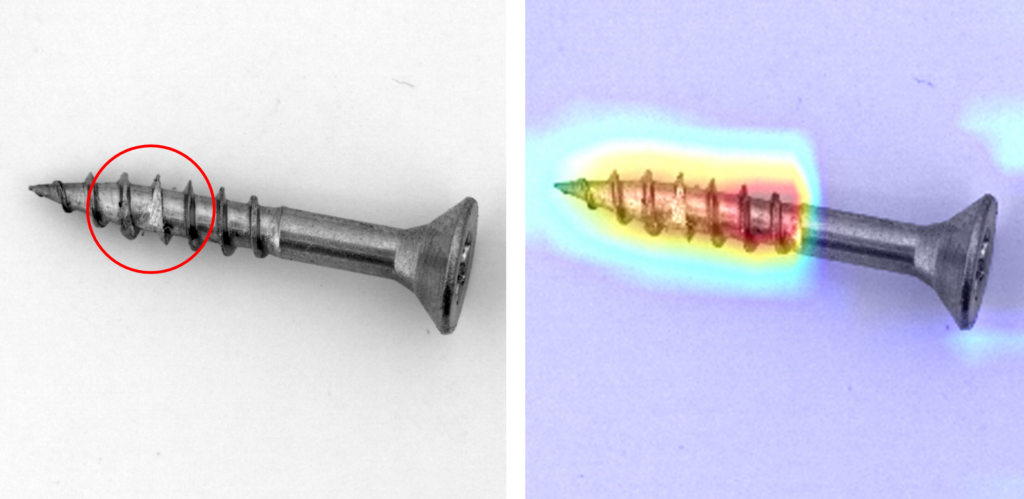
In the field of industrial data science, we develop deep learning architectures and image processing algorithms for AI-based quality control in manufacturing. We have conducted numerous projects involving the light-camera-based inspection of various fabrics, including leather (Mai/Penava/Büttner 2024) or cotton (Wiedemann/Penava/Mai/Büttner 2025), packaging, welding seams (Breitenbach et al. 2021), and soldering joints (Eisentraut et al. 2025). We are also internationally recognized in a broad range of image data formats, including CT-based quality inspection of jet engines, ultrasound-based control of semiconductor boards, and thermal imaging-based inspection of metal 3D-printed products (Baumgartl et al. 2020).
Wiedemann/Penava/Mai/Buettner (2025): Deep-Learning-based Determination of Textile Properties: A Novel Triplet Architecture Approach for Classifying Cotton Content. IEEE Access 13:164395-164408, 2025. doi:10.1109/ACCESS.2025.3610920.
Eisentraut/Hosch/Roytenberg/Benecke/Penava/Buettner (2025): Defect Detection in Industrial Soldering Processes Using Machine Learning: A Critical Literature Review. IEEE Access 13:41533-41558. doi:10.1109/ACCESS.2025.3547847.
Mai/Penava/Buettner (2024): A novel deep learning-based approach for defect detection of synthetic leather using Gaussian filtering. IEEE Access 12:196702-196714. doi:10.1109/ACCESS.2024.3521497.
More publications related to Industrial Data Science
Breitenbach/Dauser/Illenberger/Traub/Buettner (2021): A Systematic Literature Review on Machine Learning Approaches for Quality Monitoring and Control Systems for Welding Processes. IEEE BigData 2021 Proceedings, pp. 2019-2025. doi:10.1109/BigData52589.2021.9671887.
Baumgartl/Tomas/Buettner/Merkel (2020): A deep learning based model for defect detection in laser-powder bed fusion using in-situ thermographic monitoring. Progress in Additive Manufacturing 5:277-285. doi:10.1007/s40964-019-00108-3.
Medical Data Science I (AI-based Biosignal Analysis):
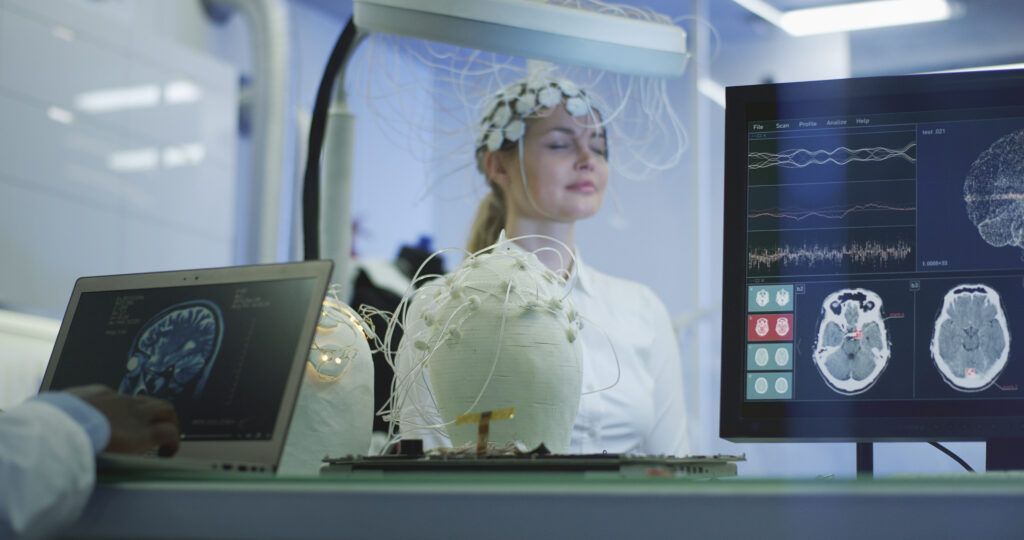
The chair has extensive expertise in EEG-based analysis of personality traits (Penava & Büttner 2025; Rieck/Penava/Büttner 2025), personality disorders (Baumgartl et al. 2020), diagnosis of depression (Penava & Büttner 2024), alcoholism (Flathau et al. 2021, Rieg et al. 2019), schizophrenia (Büttner et al. 2019, 2020; Frick/Rieg/Büttner 2021; Baumgartl et al. 2021), epilepsy prevalence (Büttner/Frick/Rieg 2019; Rieg/Frick/Büttner 2020), non-substance addictions (Groß/Baumgartl/Büttner 2020), developmental disorders (Breitenbach et al. 2021; Groß et al. 2021; Büttner et al. 2021), anxiety disorders (Groß et al. 2021), sleep disorders (Büttner/Grimmeisen/Gotschlich 2020; Breitenbach/Baumgartl/Büttner 2020; Büttner/Fuhrmann/Kolb 2019), stress (Baumgartl/Fezer/Büttner 2020), and eating disorders (Raab/Baumgartl/Büttner 2020).
We also apply other biosignals such as ECG for machine-learning-based robust detection of arrhythmias (Rieg et al. 2020) and heart disease (Büttner & Schunter 2019).
Penava & Buettner (2025): A novel subject-independent deep learning approach for user behavior prediction in electronic markets based on electroencephalographic data. Electronic Markets 35, article no. 37. doi:10.1007/s12525-025-00778-8.
Rieck/Penava/Buettner (2025): A Systematic Literature Review of Machine Learning-based Personality Trait Detection using Electroencephalographic Data. IEEE Access 13:114812-114833. doi:10.1109/ACCESS.2025.3586005.
Penava & Buettner (2024): Early-Stage non-severe Depression Detection using a novel Convolutional Neural Network Approach based on resting-state EEG data. IEEE Access 12:173380-173389. doi:10.1109/ACCESS.2024.3502540.
More publications related to Medical Data Science I (AI-based Biosignal Analysis)
Flathau/Breitenbach/Baumgartl/Buettner (2021): Early Detection of Alcohol Use Disorder Based on a Novel Machine Learning Approach Using EEG Data. IEEE BigData 2021 Proceedings, pp. 3897-3904. doi:10.1109/BigData52589.2021.9671448.
Baumgartl/Scholz/Sauter/Buettner (2021): Detection of Schizophrenia Using Machine Learning on the Five Most Predictive EEG-Channels. PACIS 2021 Proceedings, article no. 38. Link.
Frick/Rieg/Buettner (2021): Detection of schizophrenia: A machine learning algorithm for potential early detection and prevention based on event-related potentials. HICSS-54 Proceedings, pp. 3794-3803. Link.
Rieg/Frick/Baumgartl/Buettner (2020): Demonstration of the potential of white-box machine learning approaches to gain insights from cardiovascular disease electrocardiograms. PLOS ONE 15(12):e0243615. doi:10.1371/journal.pone.0243615.
Buettner/Beil/Scholtz/Djemai (2020): Development of a machine learning based algorithm to accurately detect schizophrenia based on one-minute EEG recordings. HICSS-53 Proceedings, pp. 3216-3225. doi:10.24251/HICSS.2020.393.
Baumgartl/Dikici/Sauter/Buettner (2020): Detecting Antisocial Personality Disorder Using a Novel Machine Learning Algorithm Based on Electroencephalographic Data. PACIS 2020 Proceedings, paper no. 48. Link.
Buettner & Schunter (2019): Efficient machine learning based detection of heart disease. IEEE Healthcom Proceedings, pp. 1-6. doi:10.1109/HealthCom46333.2019.9009429.
Buettner/Hirschmiller/Schlosser/Roessle/Fernandes/Timm (2019): High-performance exclusion of schizophrenia using a novel machine learning method on EEG data. IEEE Healthcom Proceedings, pp. 1-6. doi:10.1109/HealthCom46333.2019.9009437.
Rieg/Frick/Hitzler/Buettner (2019): High-performance detection of alcoholism by unfolding the amalgamated EEG spectra using the Random Forests method. HICSS-52 Proceedings, pp. 3769-3777. doi:10.24251/HICSS.2019.455. Best Paper Award
Medical Data Science II (AI-based Imaging):

We develop robust and highly precise AI architectures for the automated evaluation of imaging systems. Examples include ophthalmological scans for the detection of eye diseases (Groß et al. 2021; Rieck et al. 2025, 2025b), as well as X-ray/CT images for the diagnosis of tuberculosis (Eisentraut et al. 2025).
Eisentraut/Mai/Hosch/Benecke/Penava/Buettner (2025): Deep Learning-Based Detection of Tuberculosis Using a Gaussian Chest X-Ray Image Filter as a Software Lens. IEEE Access 13:36065-36081. doi:10.1109/ACCESS.2025.3544923.
Rieck/Mai/Eisentraut/Buettner (2025): A Novel Transformer-CNN Hybrid Deep Learning Architecture for Robust Broad-Coverage Diagnosis of Eye Diseases on Color Fundus Images. IEEE Access 13:156285-156300. doi:10.1109/ACCESS.2025.3606334.
Gross/Breitenbach/Baumgartl/Buettner (2021): High-Performance Detection of Corneal Ulceration Using Image Classification with Convolutional Neural Networks. HICSS-54 Proceedings, pp. 3416-3425. doi:10.24251/HICSS.2021.415.
More publications related to Medical Data Science II (AI-based Imaging)
Rieck/Eisentraut/Buettner (2025b): Broad-Spectrum Eye Disease Classification Using a Deep Learning-based Tailored Software Lens. PLOS ONE, 20(11):e0335419, 2025. doi:10.1371/journal.pone.0335419.
Materials Data Science:
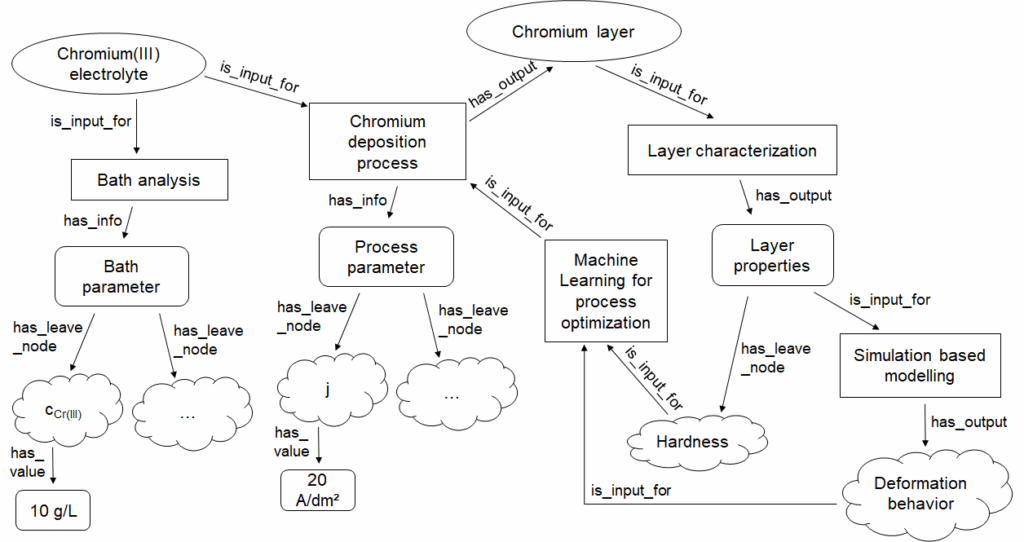
In materials data science, we develop AI-based methods to reveal non-linear physical and electrochemical relationships. These methods can be used to derive mass density models for hard magnetics (Kini et al. 2023), and to analyze nonlinear property-process relationships in electroplating (Sörgel/Büttner et al. 2021).
For example, within the BMFTR joint project with TU Ilmenau, Aalen University, Offenburg University of Applied Sciences, the Fraunhofer Institute for Manufacturing Engineering and Automation IPA, as well as the companies Hansgrohe SE, DiTEC GmbH, PlanB. GmbH, Atotech Deutschland GmbH & Co. KG, Betz-Chrom GmbH, and IPT International Plating Technologies GmbH, we are developing digital tools to improve electroplated coatings using chromium (III)-based processes (short title: DigiChrom). DigiChrom is part of the MaterialDigital platform initiative.
Kini/Choudhary/Hohs/Jansche/Baumgartl/Buettner/Bernthaler/Goll/Schneider (2023): Machine learning-based mass density model for hard magnetic 14:2:1 phases using chemical composition-based features. Chemical Physics Letters 811:140231. doi:10.1016/j.cplett.2022.140231.
Sörgel/Buettner/Baumgartl/Seifert/Metzner/Feige/Ispas/Endikrat/Leimbach/Bund (2021): The need for digitalisation in electroplating –
How digital approaches can help to optimize the electrodeposition of chromium from trivalent electrolytes. Journal of Electrochemistry and Plating Technology 14(1):2-11. doi:10.12850/ISSN2196-0267.JEPT7147.
Food Industry:

We examine the extent to which AI technologies are implemented and their potential in the food industry (Gradl/Reis/Büttner 2025). Particular focus is given to developing high-performance deep learning architectures that can robustly recognize fruit ripeness across different types of fruit (Fischer-Brandies et al. 2025). Other projects focus on specific fruits, for example cashew apples (Winklmair et al. 2025).
Fischer-Brandies/Müller/Riegger/Buettner (2025): Fresh or Rotten? Enhancing Rotten Fruit Detection with Deep Learning and Gaussian Filtering. IEEE Access 13:31857-31869. doi:10.1109/ACCESS.2025.3542612.
Gradl/Reis/Buettner (2025): Industrial Maturity of Machine Learning Solutions within the Food Industry. IEEE Access 13:62831-62855. doi:10.1109/ACCESS.2025.3558091.
Winklmair/Sekulic/Kraus/Penava/Buettner (2025): A deep learning based approach for classifying the maturity of cashew apples. PLOS ONE 20(6):e0326103. doi:10.1371/journal.pone.0326103.
AI in Human Resources:
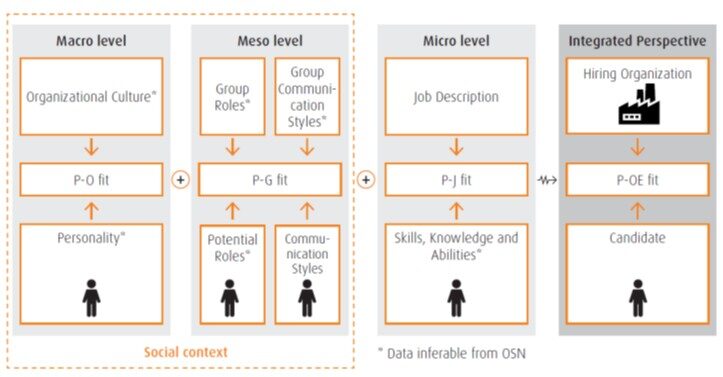
We cover the entire human resource process chain. From tailored recruitment and aptitude assessment (including Büttner 2014, 2016), through automated contract processes (including Büttner 2013), HR analytics (including Büttner 2015a, 2015b, 2017b) and controlling for assessing personnel situations and planning, to language model-based evaluation of exit interviews (e.g., Mönks/Penava/Büttner 2025), we have carried out numerous BMFTR research and application projects with commercial enterprises such as Airbus, Philips, and Deutsche Bahn.
All current projects employ AI, particularly for talent intelligence, intelligent training, performance management, retention management, organizational culture mining, and workplace safety. Generative AI is used in particular for personnel marketing and employer branding, employee self-services, chatbots in onboarding, AI-based generation and optimization of job advertisements, as well as for AI interviewing tools and chatbots.
Moenks/Penava/Buettner (2025): A Systematic Literature Review of Large Language Model Applications in Industry. IEEE Access, 13:160010-160033, 2025. doi:10.1109/ACCESS.2025.3608650.
Buettner (2017a): Getting a job via career-oriented social networking markets: The weakness of too many ties. Electronic Markets: The International Journal on Networked Business 27(4):371-385. doi:10.1007/s12525-017-0248-3.
Büttner (2016): Abschlussbericht zum BMBF Forschungsprojekt “Effizientes Recruiting von Fachkräften im Web 2.0 (EfficientRecruiting 2.0): Hochautomatisierte Identifikation und Rekrutierung von Fachkräften durch Analyse internetbasierter sozialer Netzwerke mittels intelligenter Softwareagenten”. doi:10.13140/RG.2.2.13529.31840.
More publications related to AI in Human Resources:
Büttner (2017b): Prädiktive Algorithmen zur Persönlichkeitsprognose auf Basis von Social-Media-Daten. PERSONALquarterly 3:22-27, 2017. Link.
Weckmueller/Büttner (2017): Big Data in der Personalauswahl. Personalmagazin, 3:26-28, 2017. Link.
Buettner (2015a): Analyzing the Problem of Employee Internal Social Network Site Avoidance: Are Users Resistant due to their Privacy Concerns? In: HICSS-48 Proceedings, pp. 1819-1828. doi:10.1109/HICSS.2015.220.
Buettner (2015b): A Systematic Literature Review of Crowdsourcing Research from a Human Resource Management Perspective. In: HICSS-48 Proceedings, pp. 4609-4618. doi:10.1109/HICSS.2015.549.
Buettner (2014): A Framework for Recommender Systems in Online Social Network Recruiting: An Interdisciplinary Call to Arms. HICSS-47 Proceedings, pp. 1415-1424. doi:10.1109/HICSS.2014.184.
Büttner (2013): Abschlussbericht zum BMBF Forschungsprojekt “Entwicklung einer elektronischen Marktplattform für Zeitarbeitskräfte zur Förderung von Beschäftigung und Wertschöpfung (eMarkt Zeitarbeit)”. Link.
Letzte Änderung: 17. November 2025